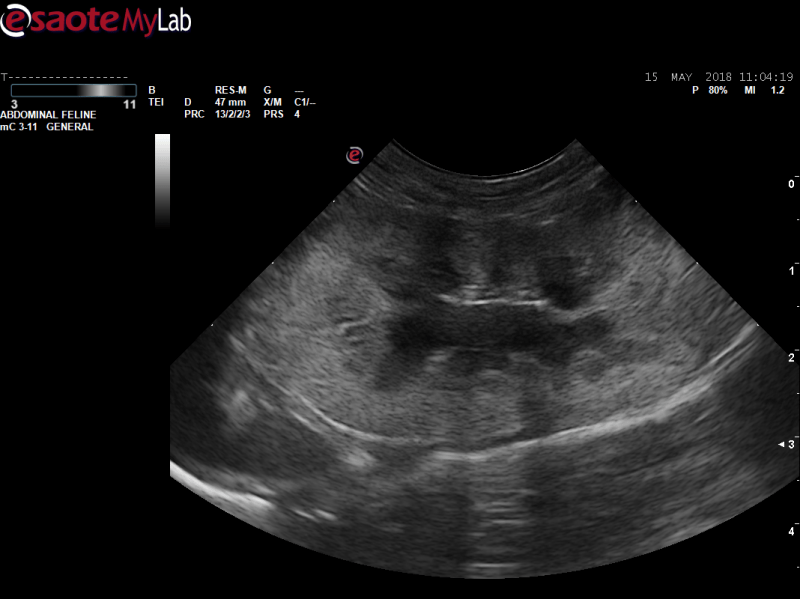- 9 year old MN DSH, history of mild weight loss over one month which since corrected
- Clinically normal
- Bloods and urine normal
- Right kidney has a medullary rim sign, and mild pelvic dilation
- Left kidney appears to be normal
- Why would you have these changes in one kidney and not the other please?
- 9 year old MN DSH, history of mild weight loss over one month which since corrected
- Clinically normal
- Bloods and urine normal
- Right kidney has a medullary rim sign, and mild pelvic dilation
- Left kidney appears to be normal
- Why would you have these changes in one kidney and not the other please?


Comments
On measurement the kidneys
On measurement the kidneys are also enlarged.
Would consider unilateral
Would consider unilateral lymphoma and would FNA the kidney.
I agree… or interstitial
I agree… or interstitial nephrosis but I have always been concerned with LP nephritis transforming to lsa in kidneys as we know if can happen in the GI tract.
Thank you. I will be
Thank you. I will be repeating the ultrasound in a few weeks and will take FNAs then.
I would find it difficult to
I would find it difficult to understand how one kidney alone could develop interstitial nephritis. In reality it should be bilateral from my experience. This kidney could be a chronic results from some degree of compression with circumcaval ureters. Over 80% of them ovccur in the rt kidney so it is a possibility.
I don’t know if it is only me
I don’t know if it is only me but it appears that it may be more than just a medullary rim sign. When I look at the cine I believe I see hyperechoic change in the cortex that could very well represent lymphoma. Just my 2 cents.
Actually interstitial
Actually interstitial nephrosis is usually bilateral but what makes the size change often is concurrent dystrophy and different stages of the disease as well as concurrent calculi that can form so you gte the big kidney/little kidney syndrome… but intertitial nephrosis is the most common form of degenerative renal disease in cats as i understand it. LSA is typically bilateral but I beleieve there are transitional phases from lymphoplasmacytic to renal lsa just hasnt been proven yet unless i missed a study somewhere.. would need a series of needles in such cats over time to prove it. So in those cases I would think it to be loigical that you can get lsa in one kidney and not the other and have seen it a few times but rare and lsa is usually bilateral. Dr. Ondreka just did a talk on this regarding carcinoma being unilateral and lsa being bilateral typically.